Blood Bath
The genre of my film will be a hybrid of horror and comedy because the theme of my film will have some dark comedy and humour as well as having the dramatic and intense horror background.
A mother and daughter go to view a new house but little do they know that the house that they are so desperate to live is holding an evil , dark and mysterious and as for the landlord well would you trust him ? .
In the beginning of my film there is going to be establishing shots of the house introduce the location and setting to my audience then in the middle of the film there is going to be photo frames falling of the shelves and lights flickering as this shows the relation of the situation to the characters and the audience as the characters see that this house is not worth buying as unexpected things keep happening in the house and they are getting more frequent and intense by the minuet.
The title of my film is Blood bath and the hybrid genre of my film is horror , my film idea meets the specification of my genre because I have a wide range of characters with different personality traits as the daughter in my film is very shy whereas the mother in my film is confident and can be bossy at times whereas the man who is guiding them around the house appears calm but has an evil and creepy vibe about him. The location fits my film because of the feeling that the house looks normal from the outside draws the audience in to what is going to be happening in the film. The props that I am going to be using are an axe and fake blood on the walls I did this because I still wanted to stick to a traditional horror genre but I wanted to add humour to my film as well.
The different styles that I will use are that I will be using continuity editing to make my shots easy to follow and to draw my audience in and I will be using dark lighting and back and white filters to make my film scary and to make my film dramatic for my audience and I will be using medium shots and establishing shots as well as high and low angle shots the sound and music that I will be using is diegetic sound as their will be dialogue of the characters talking to one another as well as tense music in the background of my film to create tension and the anchorage text that i will be displaying to my audience will be in white letters with red splats behind it. As the colour white symbolises innocence and purity whereas the colour red symbolises blood and danger.
The first scene will be where the characters are walking up to the house I am doing this because I want the audience to get introduced to the characters and see different personality traits and it allows my audience to see what my characters are wearing .
The second scene is going to be where my characters are getting a tour of the house and are getting shown into the living room this is to introduce my audience to the different elements of the house and to introduce my audience to the man showing the mum and daughter round .
the third scene is where there is going to be a shot where the characters are going to be walking into the kitchen and the lights start flickering and going off and on.,
And scene four is going to be filmed in the corridor of the house and it is going to focus on the stairs and the characters walking up and there will also be sped up scary music being added because the mother and daughter will have their backs to the audience and this will be effective because there will be a close up of the axe behind the man's back to show his crazy and evil side then there will be a cut after the shot to show the shot of the bloody hand prints and writing on the wall before a scream sound effect and the screen will ten go pitch black before having credits rolling up .
Friday, 11 December 2015
Filming risk assessment
Risk assessment form
Hazards
|
Who is exposed
Who may be harmed
|
Level of risk
|
Control measures
Measures being taken to minimise risks identified
|
Level of risk once controls are in place
|
Roots and hanging down tree branches in the woods.
|
My actors who are walking and running through the
forest
|
Medium
|
Make sure I check the location out first and guide them to
a safer route if there is a hanging tree branch in the way
|
Low
|
Prop – bloody knife
|
Certain characters in my film.
|
High
|
Everyone keeps a safe distant from the knife and not to
run when holding the weapon. I would transport it by using fake bloody knife for transport and a real knife for the shot and killing of people .
It would be used in the scene by having the killer hold the knife before killing the person . |
Quite low because a fake knife will be used for transportation and i will make sure to give the actor a blunt knife when it comes to acting out the killing of the victim to avoid any injuries from happening.
|
Road outside my house
|
All characters crossing to get to the forest
|
Medium
|
Make sure that you are looking both ways and to be careful
as it can get busy at times.
|
Low
|
When the camera is on the tripod
|
All characters
|
Medium
|
Be careful of the tripod and warn everyone before filming
that scene that the tripod is there so that people do not trip over the legs
of the tripod.
|
Low
|
Wet mud
The stairs in my House Filming outside of my house |
All characters
All characters All characters |
High
Medium Medium |
Be careful when walking in the mud over the forest as
characters could slip and fall over so if you see a part of the forest with
mud then avoid it .
Make sure that any objects are out of the way of the stairs as actors could trip and fall over. Make sure to check if people are walking past the pavement and make sure that the tripod is set up and positioned properly. And check to see if the pavement is wet as my actors could slip and fall over. |
Low
Low Low |
camera and tripod tutorial
Camera and Tripod tutorial
Firstly when you are setting up your camera it will tell you to set up you will be expected to set up the date , time and time zone . once you have done that you will want to look through the viewfinder and press the shutter release button on top of the camera half way down until you hear a double beep this will confirm that the lens are in focus .
If you are new to using a camera like this then playing around with the different camera settings can be rather daunting at first i would suggest turning the mode dial on top of your camera to auto setting as the camera will automatically calculate the best exposure for you and you should be good to go .
When Operating the flash you will want to press the information button this is located behind the shutter release button a screen will appear this will say LCD monitor on it will show all the different camera settings press the i button located on the lower left corner of the LCD. Use the four way arrow keys surrounding the ok button and move until the flash mode a lighting bolt icon is highlighted in yellow .

When setting up a tripod remember to extend the largest section of the legs first and the smaller sections at the bottom of the legs are less rigid then the thick top sections so these are more wobbly . Avoid raising the centre colum as this is the most unstable component of affordable tripods so avoid trying to film or take pictures in conditions when it is windy .
Make sure that the feet are stable on the ground as if the tripod is placed on a slippery surface like a rock or loose gravel then try to wedge the feet in position especially if you are shooting in a low angle.
Firstly when you are setting up your camera it will tell you to set up you will be expected to set up the date , time and time zone . once you have done that you will want to look through the viewfinder and press the shutter release button on top of the camera half way down until you hear a double beep this will confirm that the lens are in focus .
If you are new to using a camera like this then playing around with the different camera settings can be rather daunting at first i would suggest turning the mode dial on top of your camera to auto setting as the camera will automatically calculate the best exposure for you and you should be good to go .
When Operating the flash you will want to press the information button this is located behind the shutter release button a screen will appear this will say LCD monitor on it will show all the different camera settings press the i button located on the lower left corner of the LCD. Use the four way arrow keys surrounding the ok button and move until the flash mode a lighting bolt icon is highlighted in yellow .

When setting up a tripod remember to extend the largest section of the legs first and the smaller sections at the bottom of the legs are less rigid then the thick top sections so these are more wobbly . Avoid raising the centre colum as this is the most unstable component of affordable tripods so avoid trying to film or take pictures in conditions when it is windy .
Make sure that the feet are stable on the ground as if the tripod is placed on a slippery surface like a rock or loose gravel then try to wedge the feet in position especially if you are shooting in a low angle.
Saul Bass Essay
Saul Bass invented the opening sequences to titles of films and the designs that Saul Bass created were meant to be a solution to a particular problem , and his personal style was to create a story behind each film title he also helped to create logo designs . Saul; Bass designed opening sequences to films from 1954 to 1955 and his work also changed the way that people look at films . He got influenced to go into the graphic design field by contemporary designers like Josef Albers and Herbert Bayer their work and success gave Saul bass that hope he needed to succeed .
He got his first job working with Otto Preminger , Otto hired Saul Bass to design the film titles of his new film Carmen Jones in 1954 but there was a bit of a down side to why Otto hired Bass this was because Otto did not any respect for Saul Bass and his talent but Saul Bass did know that he would give him a chance to express it . But by getting ideas in the form of the new Swiss style Saul bass made the film title an important part of the cinema experience he used this technique in his documentary Bass on titles which was made in 2006 . Every time he went to create a film title he would always use the same three steps that he used for any design project these were that he saturated himself with the knowledge of the company , he then made sure that he understood the vision of the company and lastly he didn't try to symbolize a point of view . This method was very successful and this made Otto Preminger's next film The man with the golden arm more successful .
The colours red and blue connote sadness and danger this shows to the audience that the genre of this film is going to be an action or crime film because of the use of the silhouette of the hand as it is not telling the audience who the killer might be and you are creating a sense of mystery and concern for the audience as by looking at the poster of the film it is making you want to go and see in order to get your questions answered and therefore this poster is effective because it is persuading you to want to go and watch this film because of the use of the drawing and words on the front of the poster.
Also the choice of gold for the writing of the title of the film suggests that one of the characters could be from a wealthy background as the colour gold connotes royalty and richness suggesting that this character could have lots of money and the typography of the writing is in capital letters suggesting that the film is shaky in places and the style of the illustration is that the hand is facing down suggesting that this character might be on edge and might have a nervous side to them .
Some people didn't like The Man With The Golden Arm because they couldn't see how it was the peak of Saul bass's career as it was the first of a series of film titles that would break the boundaries of both technology and art . Saul bass then moved onto to film making and directing some examples of films that he helped make are the man who creates which won an Oscar he also created a science fiction called Phase IV , these films were both meant to combine images and with tight storytelling . Unfortunately after the film Phase IV didn't do so well he found himself having to rethink his career and that is when he decided to be a graphic designer between the years 1967 and 1991 , Saul Bass designed a range of different logos that looked very effortlessly but he filled every criteria with the same 3 stages approach without ever having to change his unique style and voice .
Some example of logos he created were :
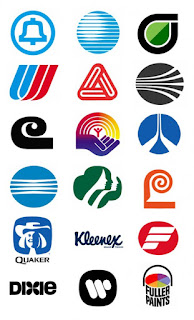
Many artists turned to Saul bass for inspiration because Hollywood was facing strong competition , from 1990 to when Saul Bass died in 1996 a huge admirer of Saul Bass work Martin Scorsese hired him to do film titles for Good Fellars .
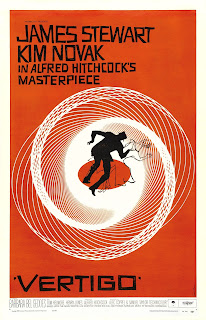
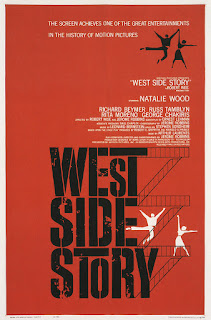
He got his first job working with Otto Preminger , Otto hired Saul Bass to design the film titles of his new film Carmen Jones in 1954 but there was a bit of a down side to why Otto hired Bass this was because Otto did not any respect for Saul Bass and his talent but Saul Bass did know that he would give him a chance to express it . But by getting ideas in the form of the new Swiss style Saul bass made the film title an important part of the cinema experience he used this technique in his documentary Bass on titles which was made in 2006 . Every time he went to create a film title he would always use the same three steps that he used for any design project these were that he saturated himself with the knowledge of the company , he then made sure that he understood the vision of the company and lastly he didn't try to symbolize a point of view . This method was very successful and this made Otto Preminger's next film The man with the golden arm more successful .
The colours red and blue connote sadness and danger this shows to the audience that the genre of this film is going to be an action or crime film because of the use of the silhouette of the hand as it is not telling the audience who the killer might be and you are creating a sense of mystery and concern for the audience as by looking at the poster of the film it is making you want to go and see in order to get your questions answered and therefore this poster is effective because it is persuading you to want to go and watch this film because of the use of the drawing and words on the front of the poster.
Also the choice of gold for the writing of the title of the film suggests that one of the characters could be from a wealthy background as the colour gold connotes royalty and richness suggesting that this character could have lots of money and the typography of the writing is in capital letters suggesting that the film is shaky in places and the style of the illustration is that the hand is facing down suggesting that this character might be on edge and might have a nervous side to them .
Some people didn't like The Man With The Golden Arm because they couldn't see how it was the peak of Saul bass's career as it was the first of a series of film titles that would break the boundaries of both technology and art . Saul bass then moved onto to film making and directing some examples of films that he helped make are the man who creates which won an Oscar he also created a science fiction called Phase IV , these films were both meant to combine images and with tight storytelling . Unfortunately after the film Phase IV didn't do so well he found himself having to rethink his career and that is when he decided to be a graphic designer between the years 1967 and 1991 , Saul Bass designed a range of different logos that looked very effortlessly but he filled every criteria with the same 3 stages approach without ever having to change his unique style and voice .
Some example of logos he created were :

Many artists turned to Saul bass for inspiration because Hollywood was facing strong competition , from 1990 to when Saul Bass died in 1996 a huge admirer of Saul Bass work Martin Scorsese hired him to do film titles for Good Fellars .


From the title posters above you can see that the techniques that Saul Bass uses are that he has a drawing to give a hint to the audience on what the film might be about and he tries to create a sense of mystery for the audience through each one of his posters and he uses a bold font to make the writing look dramatic and to make the letters stand out for the audience. And the techniques that define Saul Bass's style are the way in which he presents the writing on the page and the use of colour in the background as each colour fits a certain theme and gets across a message for the audience .
Saul Bass's opening sequences were effective in setting the mood for the audience because it would help to give the audience a clue on what the genre of the film might be about and Saul Bass used a wide range of different camera angles and the use of non diegetic sound to help build up tension is good to have in the opening as it helps to grab the audiences attention .
Saul bass was influential in the film industry because people started to see his hand written work and drawings and he started to get more recognition for his work as all his film posters tell a story for the audience have hidden clues for the audience to try and work out and each film has recurrent motifs.
Monday, 23 November 2015
How to write a script
Fade in : The very first thing on any first page should be be these words
Scene Heading : This is usually a one line description of the location and time of day of that scene , it is also a one line description of the location and it says if it is inside or outside this is also k own as the slugline and this should also be put in capital letters .
Character's First appearance: A description of the character's name should be in capital letters
Character : A character's name always appears above the dialogue
Action : The narrative description of events that happen in that scene
Transition : These are the film editing instructions
Dialogue : These are lines of speech for every character, dialogue format is used at anytime a character is speaking even when they are off screen and voice overs .
Learning Camera Techniques
Learning Camera Techniques
Camera that we will be using - Nikon D2000
On the top of the camera there is a dial with lots of different camera settings on it the green button on the top sets it to auto .
On the side of the lens make sure it is set to auto as well , this lets you be able to auto focus the camera. Above the button used to focus if you turn the dial it lets you turn the camera off or on . The back of the camera has a button this allows you to see what you are taking a picture or video of.
On the camera display you will see a red square by using the arrow keys put the square over a person or object that you would like to be in focus. Then gently hold down the silver button as this lets you focus on whatever is in the red square , when it is in focus the square will go green then when it is focused hold down the button fully to take your picture.
Camera that we will be using - Nikon D2000
On the top of the camera there is a dial with lots of different camera settings on it the green button on the top sets it to auto .
On the side of the lens make sure it is set to auto as well , this lets you be able to auto focus the camera. Above the button used to focus if you turn the dial it lets you turn the camera off or on . The back of the camera has a button this allows you to see what you are taking a picture or video of.
On the camera display you will see a red square by using the arrow keys put the square over a person or object that you would like to be in focus. Then gently hold down the silver button as this lets you focus on whatever is in the red square , when it is in focus the square will go green then when it is focused hold down the button fully to take your picture.
Filming language
Filming Language
5 seconds
Action - said by the director at the start of a scene .
Five seconds after lines are said
Cut Said by the director at the end of a scene to stop the actors in the scene and to tell the actors that the scene has finished.
5 seconds
'?" - Actor
Rolling - said by the camera operator before the director says action as the camera operator has to make sure that the camera is recording .
Turns off - The camera operator turns of the camera after the scene is finished
5 seconds
Action - said by the director at the start of a scene .
Five seconds after lines are said
Cut Said by the director at the end of a scene to stop the actors in the scene and to tell the actors that the scene has finished.
5 seconds
'?" - Actor
Rolling - said by the camera operator before the director says action as the camera operator has to make sure that the camera is recording .
Turns off - The camera operator turns of the camera after the scene is finished
Key Media Theory
Key Media Theory
Narrative
Todorov's Theory
Todorov introduced a theory in 1869 this was one that he thought could be applied into any film , his theory was that he believed that most films followed the same narrative pattern. Todorov thought that there were five stages to his pattern .
1. Equilibrium - This where the audience first meets the characters .
2. Disruption- Where something happens to change the characters lives.
3. Realisation- Where the characters realise that they need to fix this situation
4. Dis-equilibrium - The characters then have to deal with the situation and then have to try and solve it.
5. New equilibrium - Everything is fine and back to the way it was or in a better state than how it started.
Equilibrium
This is where we first get introduced to the characters and find out who is who and what they are called .
Got out of the problem and everything goes back to how it has started .
Levi Strauss believed that the world was split into a series of binary opposites , this means that he thought that only one thing can be defined in relation to something that it isn't.
Class
Narrative
Todorov's Theory
Todorov introduced a theory in 1869 this was one that he thought could be applied into any film , his theory was that he believed that most films followed the same narrative pattern. Todorov thought that there were five stages to his pattern .
1. Equilibrium - This where the audience first meets the characters .
2. Disruption- Where something happens to change the characters lives.
3. Realisation- Where the characters realise that they need to fix this situation
4. Dis-equilibrium - The characters then have to deal with the situation and then have to try and solve it.
5. New equilibrium - Everything is fine and back to the way it was or in a better state than how it started.
Equilibrium
This is where we first get introduced to the characters and find out who is who and what they are called .
 |
| Disruption |
This is where they realise that they need to get out of the junkyard and how the obstacles they come face to face with over time.
Realisation
Realising they need to stick together to get out of this situation
Dis - equilibrium
Solve it by using a claw to get them out of the junkyard how the characters respond to a problem
New equilibrium
Got out of the problem and everything goes back to how it has started .
Barthes Enigma and action codes
Roland Barthes was paid to look at texts and to think how they were put together. Roland's idea was that texts could be open and unravelled in different ways and closed where there is only one thread to pull on . Barthes then decided that the threads you pull on to try and un ravel meaning are called the Narrative codes . These include Action and Enigma codes.
Action codes
Action codes are certain events that move on the narrative towards a particular direction , it means that any action that implies a further narrative action , for example a gunslinger draws his gun at someone to fire so the audience get reeled in as we wonder what will happen next .
Enigma Codes
Enigma codes place questions on the audience which then become answered later on in the film . For example who is she? where is he going ? why is she doing that? . They refer to any particular element in the story that is not explained and therefore creates an enigma for the audience creating questions that need an explanation .
Levi Strauss believed that the world was split into a series of binary opposites , this means that he thought that only one thing can be defined in relation to something that it isn't.
Example a hero is only a hero if there is villain in the story as well.
Representation types
Age
Class
Media techniques sound
Media Techniques Sound
Diegetic Sound
This is where sound is visible on a screen this means that the audience can hear the voices of the characters in the film , the audience can also hear sounds and music coming from the film . Diegetic sound can also be on or off screen this depends on what image is inside or outside the frame.
For example this scene from divergent where
Non Diegetic Sound
This is sound that is not visible on screen and is not implied to be present in action non diegetic sound is represented as a source outside a story space.
Synchronous Sound
Synchronous sounds is a sound that is matched to particular movements that are happening in that scene some examples of this are when footsteps link to people's feet walking . Synchronous sounds help the audience to interact with the characters in the film for example the click of a door being opened in a horror movie creates that eerie atmosphere for the audience as you don't know if it is the killer or not.
Asynchronous Sound
Asynchronous Sounds are sounds that match an action being performed however it is not synchronised with that action , asynchronous sound is normally used when the director wants to create tension the audience cant hear the sound that the character in the film can hear . Then the camera pans or tracks to capture a clear shot of the sound this then makes it clearer for the audience to see what the sound is .
Sound Motif
Sound Bridge
Sound bridge can lead in or out of a scene this can happen at the beginning of a scene when the sound from a previous scene is still going before the sound from a new scene begins .
This is the musical component of a movies soundtrack . Most scores are written for that movie by a group of composers .
Incidental Music
Incidental music is music that is played during a film or a broadcast to create a specific mood for the audience .
Ambient Sound
Ambient sound are background sounds which are present in a scene or location , the types of ambient sounds are wind , water, birds, crowds and traffic.
Ambient sound is very important in film work because it helps provide audio continuity between shots , it also helps to prevent an unnatural silence when no other sound is there , and they help to establish or reinforce a mood .
There are several types of ambient sounds used in film these are matching ambient sound this is where any ambient sound is recorded to match a scene. Wild sound this is where background noise with more than one sound is not synchronised with the main idea for example children playing in a playground .
Diegetic Sound
This is where sound is visible on a screen this means that the audience can hear the voices of the characters in the film , the audience can also hear sounds and music coming from the film . Diegetic sound can also be on or off screen this depends on what image is inside or outside the frame.
For example this scene from divergent where
Non Diegetic Sound
This is sound that is not visible on screen and is not implied to be present in action non diegetic sound is represented as a source outside a story space.
Synchronous Sound
Synchronous sounds is a sound that is matched to particular movements that are happening in that scene some examples of this are when footsteps link to people's feet walking . Synchronous sounds help the audience to interact with the characters in the film for example the click of a door being opened in a horror movie creates that eerie atmosphere for the audience as you don't know if it is the killer or not.
Asynchronous Sound
Asynchronous Sounds are sounds that match an action being performed however it is not synchronised with that action , asynchronous sound is normally used when the director wants to create tension the audience cant hear the sound that the character in the film can hear . Then the camera pans or tracks to capture a clear shot of the sound this then makes it clearer for the audience to see what the sound is .
Sound Motif
This is a sound effect or a wide spread of sound effects that are linked to that particular character , setting , situation , which is shown throughout the film . The sound motifs prepare the audience for any arrival or actions of a particular character .
Sound motifs can be very useful in a rough cut when they are trying to help decide the narrative functions of the characters and when they are trying to work out the right sounds for each individual character as the audience moves through the story .
Sound Bridge
Sound bridge can lead in or out of a scene this can happen at the beginning of a scene when the sound from a previous scene is still going before the sound from a new scene begins .
However this can happen at the end of a scene when the sound from the next scene is heard before the image appears on the screen , sound bridges are a common transition of an continuous editing style and a sound bridge can stretch the connection between the two scenes as their mood suggested by the music is still the same.
Score
This is the musical component of a movies soundtrack . Most scores are written for that movie by a group of composers .
Incidental Music
Incidental music is music that is played during a film or a broadcast to create a specific mood for the audience .
Ambient Sound
Ambient sound are background sounds which are present in a scene or location , the types of ambient sounds are wind , water, birds, crowds and traffic.
Ambient sound is very important in film work because it helps provide audio continuity between shots , it also helps to prevent an unnatural silence when no other sound is there , and they help to establish or reinforce a mood .
There are several types of ambient sounds used in film these are matching ambient sound this is where any ambient sound is recorded to match a scene. Wild sound this is where background noise with more than one sound is not synchronised with the main idea for example children playing in a playground .
Media techniques -Shot types
Media techniques-Shot types
Extreme wide/establishing shot
This lets the audience sees the location and to set the scene for the audience .
Harry potter and the deathly hallows part two sets the scene as it lets people see the school in a slightly more eerie background and it lets the audience see what is going on .
Wide shot
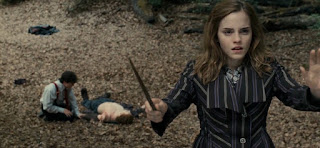
Medium Shot
This is anything from the head to the waist down
Medium close up
This allows the audience to see the head and shoulders of the character.
Close up
Lets the audience interact with the characters as they can see the expressions and feelings on the characters face through particular scenes.
Extreme close up
This is where you only see the persons eyes and nothing else this lets the audience see what is going through the characters eyes and what they are thinking .
Two shot
This lets the audience see relationships between the two characters whether that is a loving realationship like these two characters in the picture or a violent relationship it lets the audience be able to be on the same level as the characters and their storylines .
Over the Shoulder shot
This shows two characters that are interacting with each other but it shows the audience who the character is looking at and what emotions they may be feeling .
Point of view
To show what the character is looking at and it helps to show the audience see what the character is doing in this situation .
High angle shot
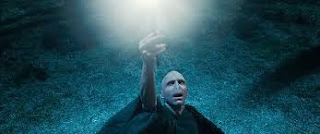
Lets the audience see a character maybe looking weak and tells the audience what they look like and how scared the character looks in a particular scene.
Low angle shot
Lets the audience see how powerful a character is and it can be used to make a person look taller for example this camera shot was used to make Hagrid look taller than he usually is.
Tilted Angle
This is where the camera is put in a tilted position and it lets you how the panic in a characters eyes .
Birds eye view
This is where you hold the camera from above and focus on the character or on a building to set the location for the audience.
Pan
Pan angle is when you move the camera around so the audience can see the whole shot .
Tilt
This is where you film something whilst tilting the camera and this is used to create a slow and smooth motion of the camera
Crane
You put the camera on something like a tripod to get high angles and to draw the audience in more .
Zoom
When you zoom the camera in to get a more close up of the character or object and it helps to make the audience feel sympathy for the character
Handheld
This is where the camera is held by something like a tripod .
Foreground / Background
When coming up with a shot remember to keep in mind that the action in the foreground and the background.
Framing
Keep the rule of thirds in mind when coming up with your shot . The audiences eye is drawn to the crossections of the frame , this is where your action needs to be taking place . However this is not saying things can break this rule but normally it is just to create an dramatic effect .
Deep and shallow focus
Depth of field is a range of focus in an image and how much it comes across as being sharp and clear to the audience . In deep focus is the foreground , middle ground and background and where everything in the frame is in focus.
Shallow focus is a camera technique incorporating a small depth of field . In shallow focus is where the image is in focus while the rest is out of focus . Shallow focus is used to emphasize one part of the image over another .
Vladimir Propp - Character Codes
Vladimir Propp developed a character by studying media text and productions , he came up with 7 character types with 100 tales that he analysed.
The hero
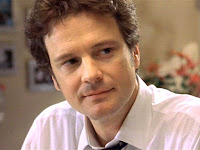 In most stories there is a major character with whom the audience will bond with more strongly and who is the main person who the story is based around.
In most stories there is a major character with whom the audience will bond with more strongly and who is the main person who the story is based around.
The villain
The strongest contrast against the hero is a villain who finds it hard to directly go against the hero. The villain is usually bad , highlighting the goodness of the hero.
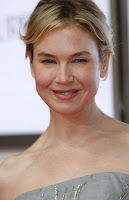
The princess
She might be an object who normally falls in love with the hero and normally gets caught by the villain then tells the hero where the villain was hiding her.
Character Types
The character types are based on old fashioned stories that can be remembered of by heart, for example it is very common for a female to be the hero role which could make a man play the princess / love interest role .
The helper
special for example a magical weapon or some particular wisdom .
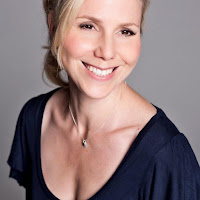
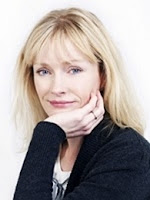
The Dispatcher
Usually has an early role in the story to send the hero on a mission.
The false Hero
A variant on the villain and then creates a complication on the plot . Their motives may be good at first but as the story goes on it soon becomes clear that they have the villains evil traits or they are maybe working for the villain .
Extreme wide/establishing shot
This lets the audience sees the location and to set the scene for the audience .
Harry potter and the deathly hallows part two sets the scene as it lets people see the school in a slightly more eerie background and it lets the audience see what is going on .
Wide shot

Show the whole of the person and the location around them and shows the audience what they are wearing .
Medium Shot
This is anything from the head to the waist down
Medium close up
This allows the audience to see the head and shoulders of the character.
Close up
Lets the audience interact with the characters as they can see the expressions and feelings on the characters face through particular scenes.
Extreme close up
This is where you only see the persons eyes and nothing else this lets the audience see what is going through the characters eyes and what they are thinking .
Two shot
This lets the audience see relationships between the two characters whether that is a loving realationship like these two characters in the picture or a violent relationship it lets the audience be able to be on the same level as the characters and their storylines .
Over the Shoulder shot
This shows two characters that are interacting with each other but it shows the audience who the character is looking at and what emotions they may be feeling .
Point of view
To show what the character is looking at and it helps to show the audience see what the character is doing in this situation .
High angle shot

Lets the audience see a character maybe looking weak and tells the audience what they look like and how scared the character looks in a particular scene.
Low angle shot
Lets the audience see how powerful a character is and it can be used to make a person look taller for example this camera shot was used to make Hagrid look taller than he usually is.
Tilted Angle
This is where the camera is put in a tilted position and it lets you how the panic in a characters eyes .
Birds eye view
This is where you hold the camera from above and focus on the character or on a building to set the location for the audience.
Pan
Pan angle is when you move the camera around so the audience can see the whole shot .
Tilt
This is where you film something whilst tilting the camera and this is used to create a slow and smooth motion of the camera
Crane
You put the camera on something like a tripod to get high angles and to draw the audience in more .
Zoom
When you zoom the camera in to get a more close up of the character or object and it helps to make the audience feel sympathy for the character
Handheld
This is where the camera is held by something like a tripod .
Foreground / Background
When coming up with a shot remember to keep in mind that the action in the foreground and the background.
Framing
Keep the rule of thirds in mind when coming up with your shot . The audiences eye is drawn to the crossections of the frame , this is where your action needs to be taking place . However this is not saying things can break this rule but normally it is just to create an dramatic effect .
Deep and shallow focus
Depth of field is a range of focus in an image and how much it comes across as being sharp and clear to the audience . In deep focus is the foreground , middle ground and background and where everything in the frame is in focus.
Shallow focus is a camera technique incorporating a small depth of field . In shallow focus is where the image is in focus while the rest is out of focus . Shallow focus is used to emphasize one part of the image over another .
Vladimir Propp - Character Codes
Vladimir Propp developed a character by studying media text and productions , he came up with 7 character types with 100 tales that he analysed.
The hero
 In most stories there is a major character with whom the audience will bond with more strongly and who is the main person who the story is based around.
In most stories there is a major character with whom the audience will bond with more strongly and who is the main person who the story is based around. The villain
The strongest contrast against the hero is a villain who finds it hard to directly go against the hero. The villain is usually bad , highlighting the goodness of the hero.

The princess
She might be an object who normally falls in love with the hero and normally gets caught by the villain then tells the hero where the villain was hiding her.
Character Types
The character types are based on old fashioned stories that can be remembered of by heart, for example it is very common for a female to be the hero role which could make a man play the princess / love interest role .
The helper
The helper supports the hero on his or her quest and the helper usually appears at any critical and dangerous moments to provide support .
The donor
The donor is a person who gives the hero something useful and special for example a magical weapon or some particular wisdom .


The Dispatcher
Usually has an early role in the story to send the hero on a mission.
The false Hero
A variant on the villain and then creates a complication on the plot . Their motives may be good at first but as the story goes on it soon becomes clear that they have the villains evil traits or they are maybe working for the villain .
The princess's Father
Lastly there is the princess's father he is the character who forbids the princess to do certain things and helps the hero on his quest to save the princess.
Subscribe to:
Posts (Atom)































